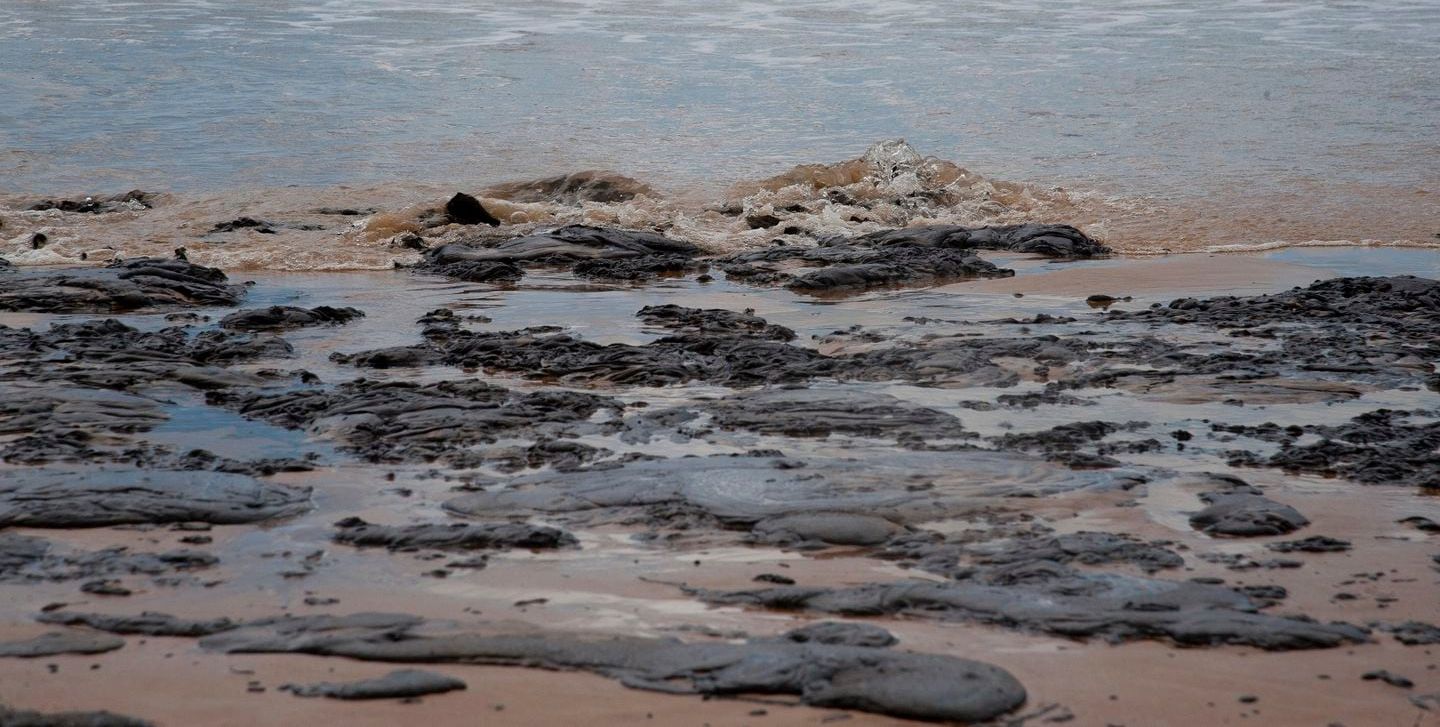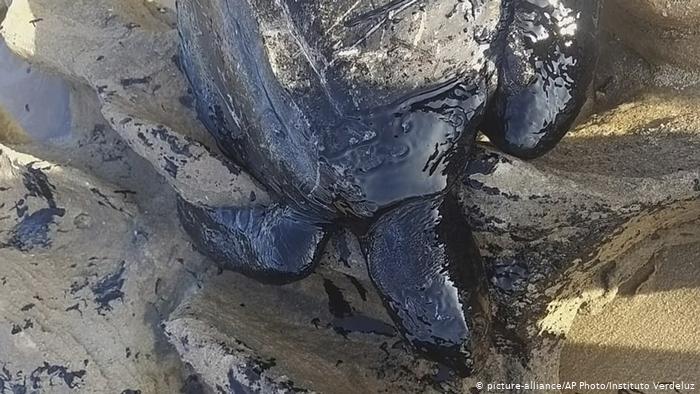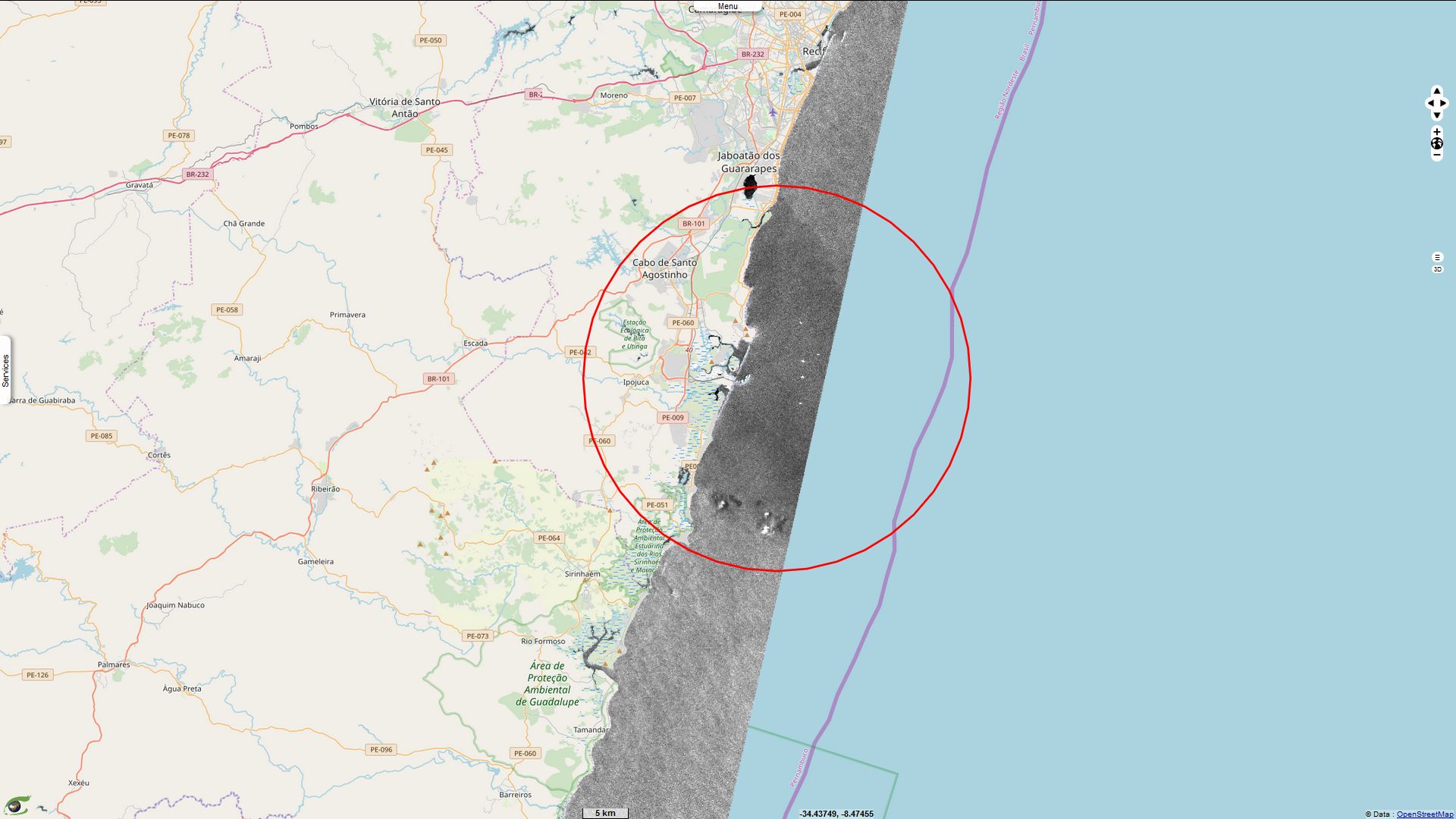Brazil oil spill: 2,000 km of northern beaches said contaminated
Sentinel-1 CSAR IW acquired on 07 October 2019 at 08:25:13 UTC
Sentinel-1 CSAR IW acquired on 16 October 2019 at 08:02:01 UTC
Sentinel-1 CSAR IW acquired on 16 October 2019 at 08:02:01 UTC
Keyword(s): Oil spill, Water pollution, Brazil
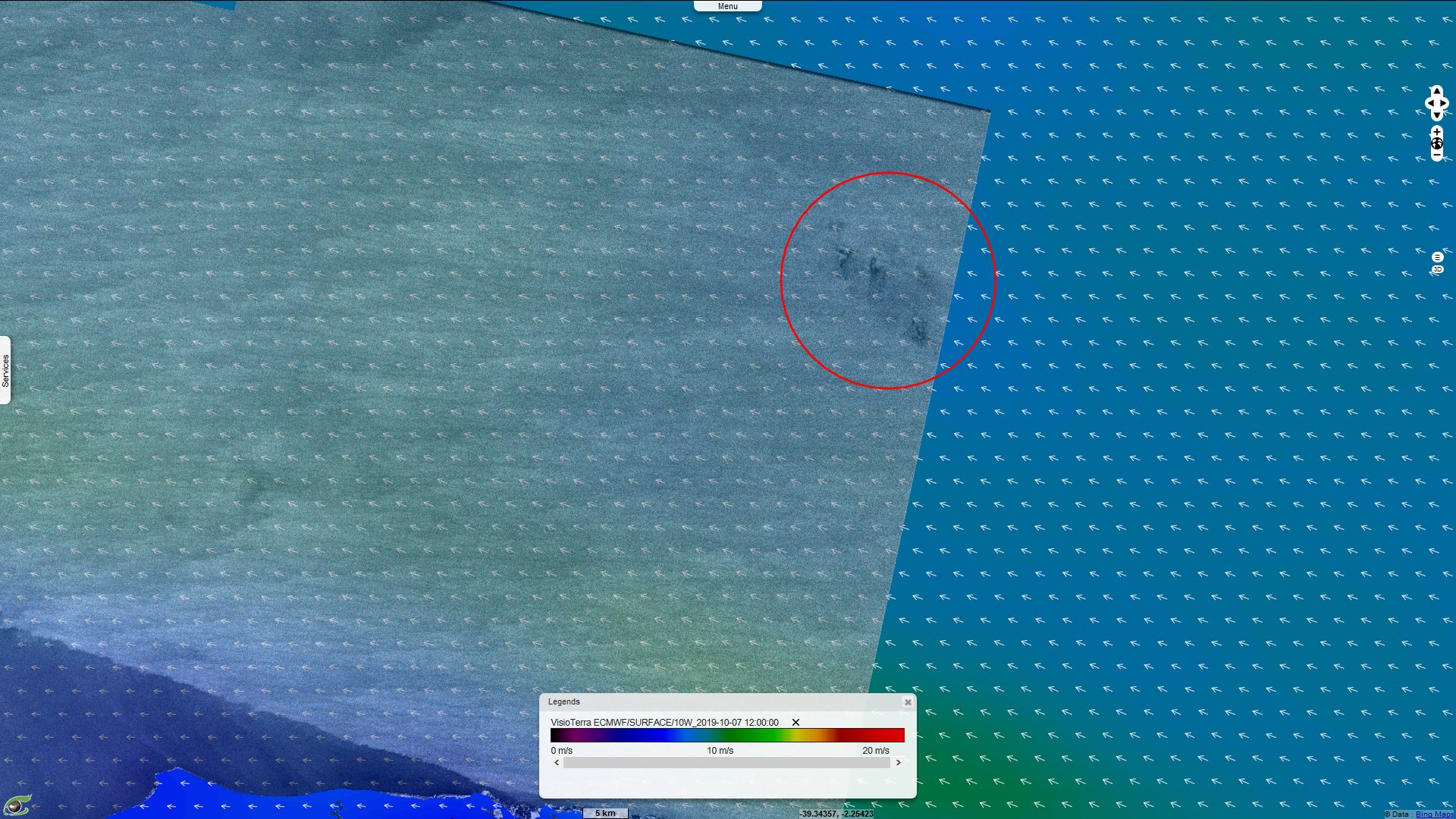
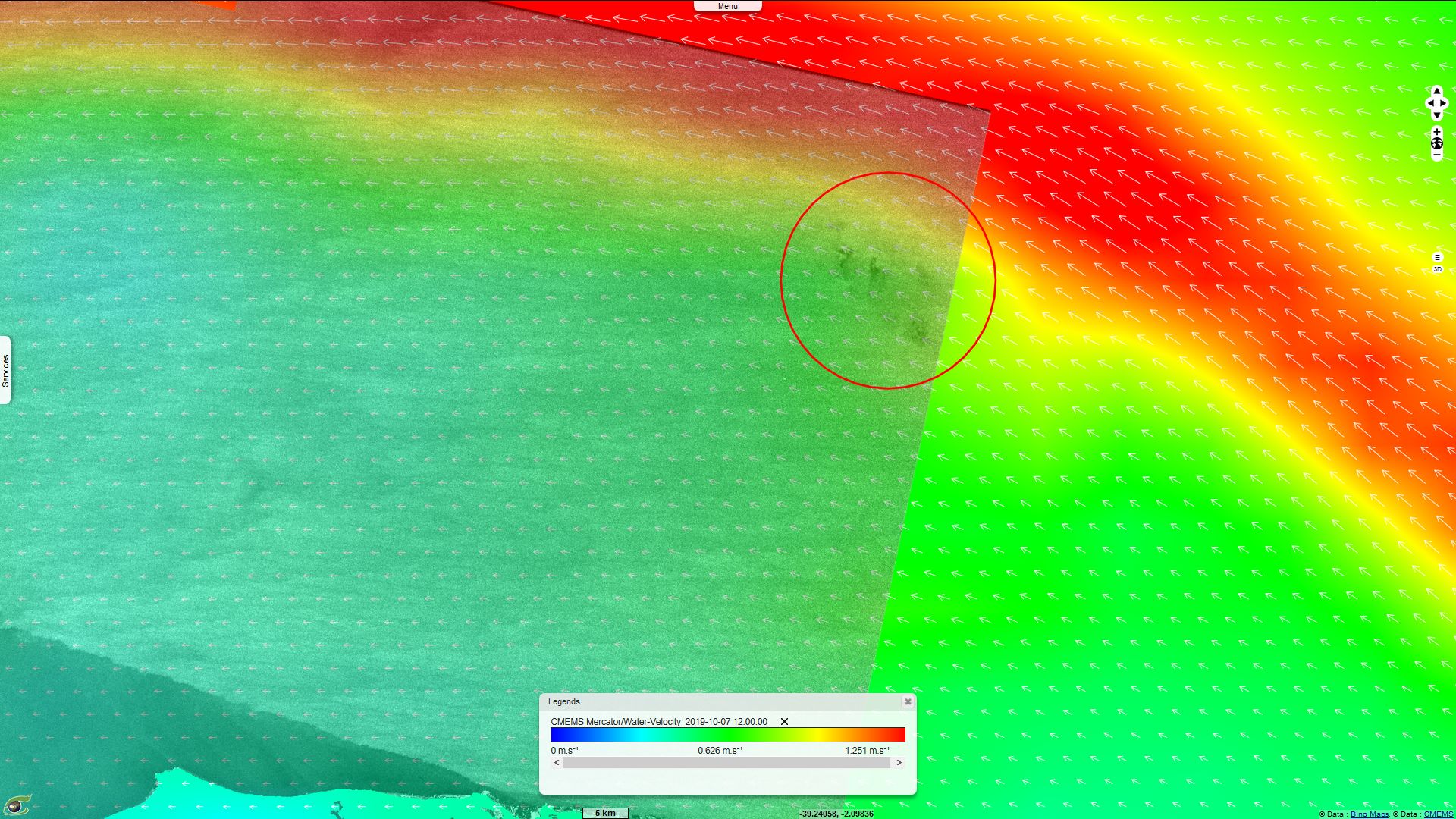
According to the Brazilian Institute of Environment and Renewable Natural Resources (IBAMA), "Thick and viscous oil debris has contaminated 139 locations spread over 2,000 kilometres across nine Brazilian states since early-September".
A criminal act ?
President Jair Bolsonaro said on early Septembre that "the mysterious oil slicks were likely the result of unspecified criminal activity and that he has on his radar screen a country that could be the origin of the oil without giving any name while the investigation was still underway" (Source: The New York Times) before saying by early October that "this could be a criminal act, could be an accidental spill. It could also be a ship that sank. It is complex" without giving more details (Source: PRI's The World).
A report from Brazil’s Institute of the Environment and Water Resources said "the origin of the sludge has still not been determined, though environment minister Ricardo Salles earlier said the oil was likely of Venezuelan origin — something denied by Caracas. The main hypothesis is that the oil spilled from a vessel passing near the Brazilian coast" (Source : The Washington Post).

"Not from us !", Petrobras said
The national oil company Petroleo Brasileiro (Petrobras) has said that "Petrobras is not responsible for the spill and that the crude is neither produced in nor exported to Brazil" (Source: The new York Times) and that "the molecular tests on samples showed they weren't compatible with the oils produced and sold by the company" (Source: Deutsche Welle). The company add that "the material was dumped into the sea more than a month ago in the waters of the Atlantic by an unidentified ship" (Source: The Repubblica).
Petrobras, states that "even though it was not involved in the spill it was contributing to the clean-up efforts, with some 100 Petrobras employees helping clean the beaches" (Source: Reuters).
One may recall that in August there was a leak from the Petrobras Abreu and Lima refinery. In fact, Petrobras has reported on 27 August 2019 "Petrobras informs that yesterday (26.08.2019) detected a leakage of estimated 5 cubic meters of oily waste (oil and water) in the industrial waste treatment plant of the Abreu e Lima Refinery (Rnest). A small amount of oil reached a stream that passes through the refinery internal grounds. The leak has been controlled since yesterday. Safety and emergency teams were immediately called in to contain and repair the affected area" (Source: Petrobras).
In one hand, it turns out that this refinery is linked to the port of Suape (municipality of Ipojuca) by the stream affected by the so-called leakage. In the other hand, an Sentinel-1 image acquired on 16 October 2019 shows a dark patch (oil slick?) around the port of Suape.
